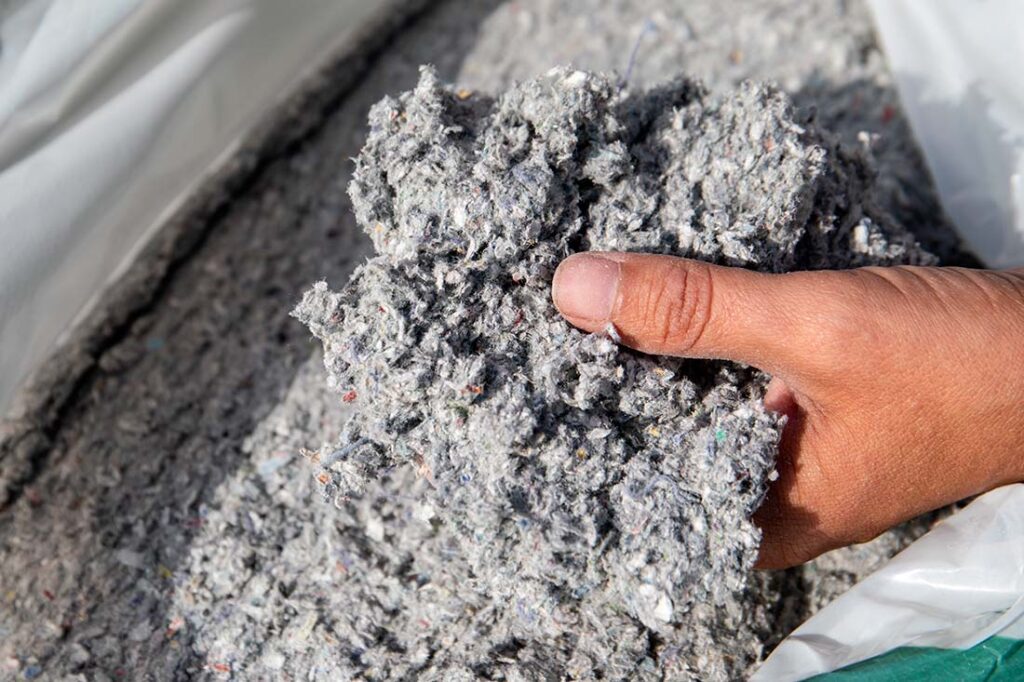Which is Insulation Solution Right for Your Home?
Since 2005, we’ve been helping homeowners in New Jersey and Westchester NY make their homes more energy-efficient, comfortable, and eco-friendly. Today, we compare using cellulose insulation versus fiberglass. Both have their benefits, but which one is right for your home? Let’s break it down in simple terms.
What is Cellulose Insulation?
First, let’s talk about cellulose insulation. Made primarily from recycled paper products, like old newspapers, cellulose insulation is an eco-friendly choice that many homeowners love. The paper is treated with a fire retardant, making it safe for use in homes. It’s usually blown into walls, attics, and other spaces, where it fills gaps and creates a dense, insulating layer.
What is Fiberglass Insulation?
Fiberglass insulation, on the other hand, is made from fine glass fibers. It’s probably the most common insulation material in homes today. It usually comes in large batts or rolls, which can be cut to fit between wall studs, floor joists, and ceiling rafters. Fiberglass can also be blown into spaces, similar to cellulose.
Comparing Performance: Which Insulates Better?
When it comes to keeping your home warm in the winter and cool in the summer, both cellulose and fiberglass do a good job. However, cellulose often has a slight edge because of its density. This density allows cellulose to better block air flow, which means it can reduce drafts more effectively. In cold winters like those we experience in New Jersey and Westchester NY, that extra performance can make a noticeable difference in comfort and energy bills.

Environmental Impact: Which is Greener?
If you’re environmentally conscious, cellulose insulation is the clear winner here. It’s made from up to 85% recycled materials, which means it reduces waste and saves resources. Plus, because it’s made from paper, it has a lower carbon footprint than fiberglass, which requires energy-intensive processes to manufacture the glass fibers.
Fiberglass, while not as eco-friendly, has improved in recent years. Many manufacturers now include some recycled content in their products. Still, it doesn’t compare to cellulose in terms of sustainability.
Installation: Which is Easier to Install?
Both cellulose and fiberglass have their installation challenges. Fiberglass batts can be easier to handle for DIY projects, but they need to be cut precisely to avoid gaps that reduce their effectiveness. Blown-in fiberglass, like blown-in cellulose, requires special equipment and is usually installed by professionals like us at Metro NY Insulation.
Cellulose, because it’s typically blown in, can fill in small spaces and irregular areas more completely than fiberglass batts. This can be particularly useful in older homes with non-standard construction.
Contact Our Insulation Experts
Soundproofing: Which Keeps the Noise Down?
If you’re looking to reduce noise between rooms or from outside, cellulose has a bit of an advantage. Its dense composition makes it better at absorbing sound than fiberglass. This can be a big plus if you live near a busy road or simply want a quieter home.
Fire Safety: Which Offers Better Protection?
Fire safety is an important consideration when choosing insulation. Cellulose insulation is treated with fire retardants, which makes it resistant to fire. In fact, it can help slow the spread of fire in your home. Fiberglass is naturally non-combustible because it’s made from glass, but it can melt at high temperatures. Both materials offer good fire resistance, but cellulose has the added benefit of helping to block air, which can feed a fire.
Cost: Which is More Affordable?
When it comes to cost, fiberglass is generally cheaper than cellulose. Fiberglass batts are widely available and often less expensive per square foot. However, when you consider the long-term savings on energy bills and the potential for better performance, the slightly higher cost of cellulose insulation can be a worthwhile investment.
Which One Should You Choose?
So, which insulation is right for your home—cellulose or fiberglass? It depends on what you value most. If you’re looking for an eco-friendly, high-performance insulation that’s great for soundproofing and air sealing, cellulose might be the better choice. If you’re looking for a more affordable option with a long track record, fiberglass could be the way to go.
At Metro NY Insulation, we specialize in cellulose insulation because we believe in its superior performance, environmental benefits, and overall value for our customers in New Jersey and Westchester NY. We’re here to help you make the best choice for your home, whether you’re building new, renovating, or just looking to improve your energy efficiency.

We hope this comparison of cellulose insulation versus fiberglass has helped clarify the differences and benefits of each. At Metro NY Insulation, we’re committed to providing the best insulation solutions tailored to your home’s specific needs. If you have any questions or want to learn more about how cellulose insulation can benefit your home, feel free to reach out to our top rated insulation team by filling out our form or calling us at (845) 445-8255. We’re here to help!
FAQs
Is cellulose insulation better for older homes? Yes, because cellulose can fill in small gaps and irregular spaces more effectively, making it a great option for older homes with non-standard construction.
Can I install cellulose insulation myself? While it’s possible, we recommend professional installation for the best results. We have the equipment and expertise to ensure your insulation is installed correctly and efficiently.
How long does cellulose insulation last? Cellulose insulation can last for decades if installed properly. It doesn’t degrade over time like some other materials.
Does cellulose insulation settle over time? Yes, cellulose can settle slightly over time, but professional installation techniques help minimize this. Even with settling, it still offers great performance.
Is fiberglass insulation safe? Fiberglass is generally safe, but it can irritate the skin, eyes, and lungs during installation. Proper protective gear is essential, or you can leave it to the pros.
How much can I save on energy bills with cellulose insulation? The amount you can save depends on various factors, but many homeowners see a noticeable reduction in their energy bills after installing cellulose insulation, thanks to its superior air-sealing properties.



